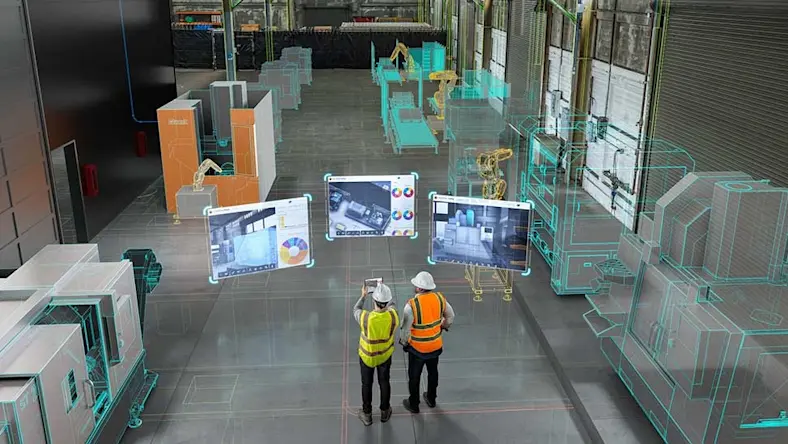& Construction

Integrated BIM tools, including Revit, AutoCAD, and Civil 3D
& Manufacturing

Professional CAD/CAM tools built on Inventor and AutoCAD
Andrew Anagnost, President and Chief Executive Officer, Autodesk: There used to be a huge fear of the cloud and what the cloud does. People were afraid of getting their intellectual property exploited or distributed on the web without their consent. Now what they’re looking at is, how do I make films, games, and compelling content in a world where it’s getting harder and harder to satisfy the needs of an increasing consumption appetite that wants more types of entertainment?
Diana Colella, Executive Vice President of Entertainment & Media Solutions, Autodesk: You’re in the theater and you look at this beautiful movie and the work that goes behind it. You would never imagine that it would be inefficient.
There’s more and more people working on those movies, but the thing is that it’s really hard for them to share any data, whether you’re at the beginning of the movie where you’re, like, actually on set, or your post-production and you’re creating a visual-effects shot. No one’s actually talking to each other. Everything is a silo when you’re making film.
Anagnost: And that’s because they use disparate tools with different types of data formats. Files are still the major way people communicate. That’s not gonna be the future. You can’t use files to communicate information. They lack the fidelity, the granularity, the instantaneous access that’s required to actually make really good decisions. And the cloud is changing how all of that data connects together.
Mike Haley, Senior Vice President of Research, Autodesk: If you decompose that data, you can give just the right data to the right person at the right time. You don’t have to send a whole file around. In fact, they don’t even know they need to file. They might just need some aspect of a production line.
Colella: A film has petabytes of data, and you don’t only have one company that’s working on a movie. So, for example, there were 13 other companies that were working on Marvel. How are they supposed to know where all the data is if they’re supposed to be using it? We want to make sure that data is shared across all the tools the customer is using so it makes their pipelines much more efficient than they are today. You still have companies who are actually filming, taking the drives, putting them on a truck, and driving it over to whoever needs to use that particular drive.
So imagine a world in the future where you finish your day as an artist, and someone else takes over in Los Angeles, and you’re able to just go in front of the computer and be able to just take over like seamlessly because everything is there.
Anagnost: There’s a lot of fear and uncertainty out there about AI right now. People concerned that AI is going to completely take away their jobs, that people will just suddenly ask a chatbot to write a script for a story about X, Y, and Z, and you get a wonderful finished product. Those of us who are in technology know that that’s highly unlikely.
Haley: AI is going to radically change the future. I don’t believe you can replace creativity that’s innate to who we are as a human. But what you can do is you can augment creativity. We can’t look at a million data points and understand patterns. We’re just not built to do that. But a creative person coupled with that gets augmented, and it takes their creativity to another level.
Anagnost: If you look at media and entertainment, asset creation is definitely going to get easier and easier in this world. People create and re-create assets that they already have. They should be able to catalog, track, and understand what assets they have and reuse them very quickly for a film or for a game.
Colella: Flow is built on the Autodesk platform service. It’s an industry cloud. It’s the data that our customers create, and they’re able to share that data across their pipelines, whether it’s created with Autodesk tools or not.
Anagnost: Artists spend a lot of time trying to create something or trying to understand something upfront. But what if they were spending all that time perfecting the final effect or the final view or the final vision? You’ll see a lot of films and games with much higher fidelity, visuals, and interactions than you’d ever seen before. And the artist is still in control.
Colella: If we’re able to change the way the industry works today, if we are able to solve some of our customers problems that they’ve been wanting to solve for so many years, I think that would be pretty rewarding.
That would be pretty cool.
Executive insights
Executive insights
Executive insights
Image courtesy of Disney/Pixar


